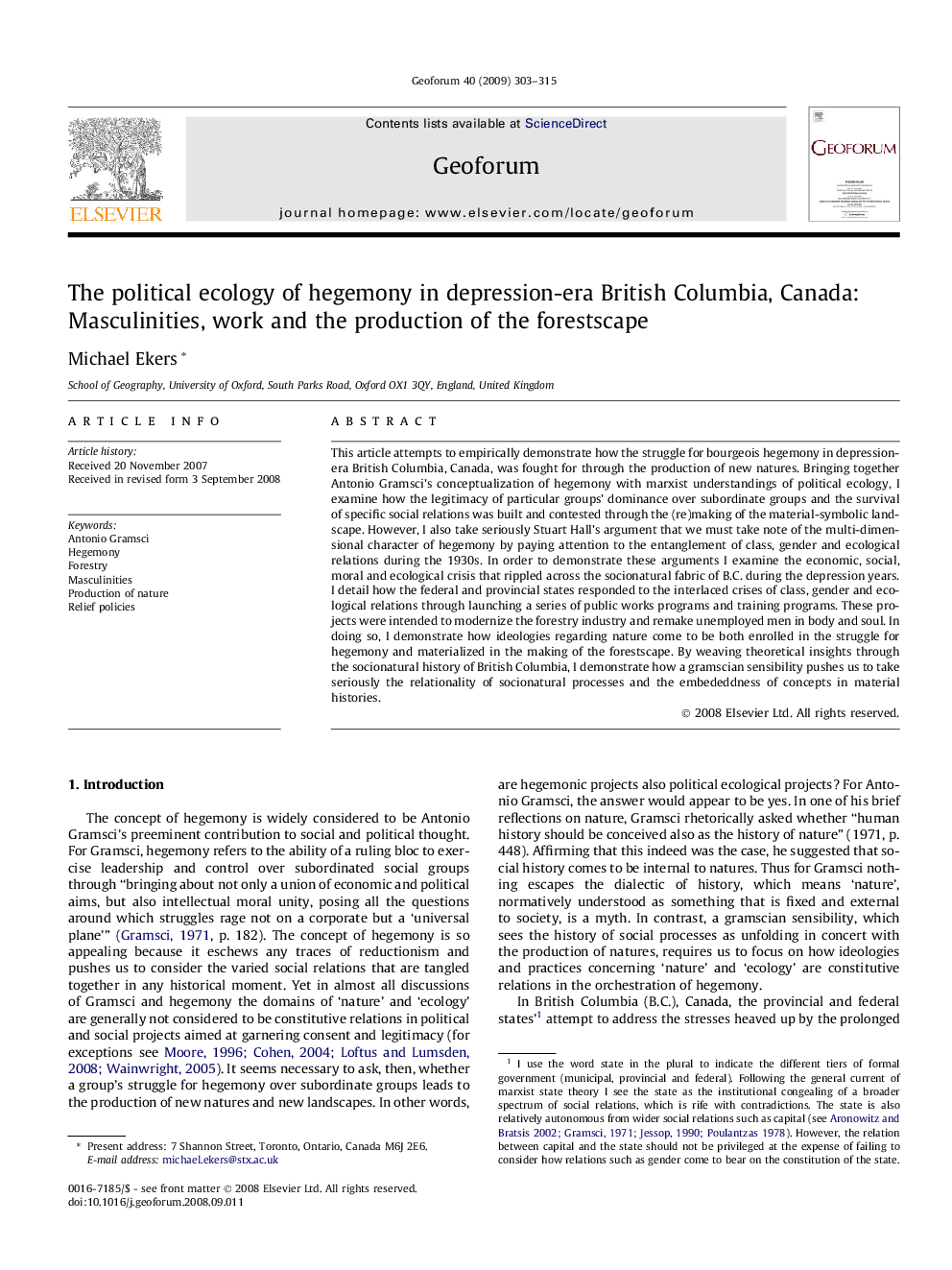| Article ID | Journal | Published Year | Pages | File Type |
|---|---|---|---|---|
| 5074870 | Geoforum | 2009 | 13 Pages |
Abstract
This article attempts to empirically demonstrate how the struggle for bourgeois hegemony in depression-era British Columbia, Canada, was fought for through the production of new natures. Bringing together Antonio Gramsci's conceptualization of hegemony with marxist understandings of political ecology, I examine how the legitimacy of particular groups' dominance over subordinate groups and the survival of specific social relations was built and contested through the (re)making of the material-symbolic landscape. However, I also take seriously Stuart Hall's argument that we must take note of the multi-dimensional character of hegemony by paying attention to the entanglement of class, gender and ecological relations during the 1930s. In order to demonstrate these arguments I examine the economic, social, moral and ecological crisis that rippled across the socionatural fabric of B.C. during the depression years. I detail how the federal and provincial states responded to the interlaced crises of class, gender and ecological relations through launching a series of public works programs and training programs. These projects were intended to modernize the forestry industry and remake unemployed men in body and soul. In doing so, I demonstrate how ideologies regarding nature come to be both enrolled in the struggle for hegemony and materialized in the making of the forestscape. By weaving theoretical insights through the socionatural history of British Columbia, I demonstrate how a gramscian sensibility pushes us to take seriously the relationality of socionatural processes and the embededdness of concepts in material histories.
Related Topics
Social Sciences and Humanities
Economics, Econometrics and Finance
Economics and Econometrics
Authors
Michael Ekers,
